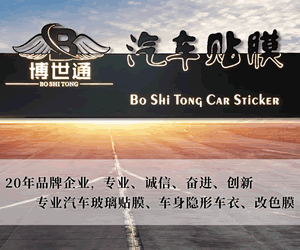日本第一劝业银行
- 目录
- 1、 日本第一劝业银行简介
- 2、 银行历史
本条目包含过多不是中文的内容,欢迎协助翻译。
若已有相当内容译为中文,可迳自去除本模板。
日本第一劝业银行
日本第一劝业银行官方网站网址:http://www.mizuho-fg.co.jp/
日本第一劝业银行简介
......
2000年9月29日由第一劝业银行、富士银行和日本兴业银行组成日本瑞穗金融集团,于2003年1月成立。
日本第一劝业银行
第一劝业银行是第一银行和日本劝业银行于1971年10月1日合并而成的,总行设在日本东京。
第一银行是1873年7月根据国立银行条例,由三井、小野两个兑换店共同出资设立的日本最古老的银行,主要从事发行纸币和经营政府财政收支。1896年成为普通商业银行,称第一银行股份公司。1912年与第二十银行合并,1913年兼并了北海银行,1917年又吞并了古河银行,1943年3月与三开银行进行合并,改名为帝国银行,1944年帝国银行又兼并了第十五银行,从而成为日本最大的银行。第一银行于1948年脱离帝国银行,1971年与日本劝业银行合并。日本劝业银行是1897年8 月根据日本劝业银行法设立的特种银行,即为振兴实业,为工业企业提供长期低息贷款设立的。合并后的第一劝业银行1980年资产额居世界大银行第十位,1986年居第一位。
第一劝业银行主要从事的业务:存款业务,贷款业务,有价证券投资业务,国内汇兑业务,国外汇兑业务,公司债券的受托和登记业务,其他业务如代理业务、保管业 务、债务担保业务等。
第一劝业银行在国内拥有360家分支机构,在国外22个国家和地区拥有11家分行和24个代表处。此外,以第一劝业银行为核心的第一劝业银行集团还拥有47家公司。这些公司分布在商业、化学、钢铁、电机等22个行业,其中有许多公司都是各该行业中的第一流企业。
1983年8月,在中国北京设立了代表处,此后,又分别在上海、广州、大连设立了办事处,还与中国国际信托投资公司、中国银行信托咨询公司、北京国际信托投资公司、上海市投资信托公司、江苏省国际信托投资公司等19家公司订立了业务合作协定。
银行历史
Eiichi Shibusawa雕像
Dai-Ichi Bank第一银行
The Dai-Ichi Bank, Ltd. , originally Dai-Ichi Kokuritsu Bank was literally the first bank and the first joint stock company ever to be established in Japan. Established by an industrialist Shibusawa Eiichi in 1873, it was originally empowered to issue banknotes, until the Bank of Japan assumed this function in 1883. Subsequently, it became a purely commercial bank based in Tokyo.
In 1884 Dai-Ichi Bank made a deal with the Joseon Dynasty to make Dai-Ichi Bank Korea Branch the monopoly agent of tariff management for Choson. In subsequent years Dai-Ichi began issuing banknotes called “Dai-Ichi Bank Token” in Korea, and became the central bank of Korea virtually. Following the Japan-Korea Protectorate Treaty of 1904, however, Dai-Ichi was deprived of its central banking in Korea by Japanese government, because the government official made an issue of Dai-ichi, mere commercial bank, being the central bank.
In 1943 Dai-Ichi Bank and Mitsui Bank, a Mitsui zaibatsu company, merged to form Teikoku Bank . Teikoku Bank was the largest bank in Japan in terms of assets when it was inaugurated. Teikoku Bank, however, couldn‘t expand its business freely owing to Japan being at World War II. Furthermore, former Dai-Ichi employees and Mitsui employees didn‘t get along well together because of the difference of the two banks‘ cororate culture. As a result, worsening its business performance, Teikoku Bank were divided into two banks, the new Dai-Ichi Bank and the new Teikoku Bank in 1948.
The new Teikoku Bank was renamed Mitsui Bank in 1954, merged with Taiyo Kobe Bank to form Sakura Bank in 1990. Sakura Bank merged with The Sumitomo Bank in 2001 and is now Sumitomo Mitsui Banking Corporation.
Nippon Kangyo Bank劝业银行
Nippon Kangyo Bank headoffice in Tokyo in 1950s
The Nippon Kangyo Bank, Ltd. was founded in 1897 as a governmental institution providing long-term light industrial and agricultural loans under the Nippon Kangyo Bank Act of 1896. The Industrial Bank of Japan was also founded in 1902, providing long-term heavy industrial loans. Nippon Kangyo Bank had offices only in Tokyo and Osaka, leaving nationwide local services in the charge of its subsidiary Noko Bank . Noko Banks were established in each prefecture, except for Hokkaidō .
In order to provide long-term loans, the bank‘s source of funds was not deposits but debt securities. The bank was also authorized to issue premium-bearing debentures. The bank financed, however, landlords and partnerships, and there were little money to go around individual farmers. In 1911 the Nippon Kangyo Bank act was amended so that Nippon Kangyo Bank could handle deposit accounts and offer short-term finance. In the latter of Taishō period the bank embarked on real estate investments, while Noko Banks were absorbed into Nippon Kangyo Bank one after another. The bank dramatically increased its scale of operations.
During World War II, Nippon Kangyo Bank was the lead management underwriter of war bonds for Japanese government. In reality, the war bond by Nippon Kangyo Bank was a lottery rather than a bond. Today‘s Japanese lottery Takarakuji has its origin in this war bond.
After World War II, Nippon Kangyo Bank was privatized and became a commercial bank following the Nippon Kangyo Bank Repeal Act of 1950. The long-term banking division of Nippon Kangyo Bank was transferred to newly-established Long-Term Credit Bank of Japan. The bank became popular among the public with the new rose logo, mascot named Nobara-chan and advertising slogan “Rose‘s NKB” .
Merger合并
In 1971 Dai-ichi Bank and Nippon Kangyo Bank merged to form the Dai-Ichi Kangyo Bank, Limited . DKB surpassed longtime leader the Fuji Bank as the Japanese largest bank measured by assets and deposit market share. DKB formed DKB Group , the largest Japanese keiretsu in terms of the number of associated companies, and became the central bank of DKB Group.
Taking over Nippon Kangyo and Noko‘s operation, DKB was the sole trustee of Takarakuji lottery and was the only bank to have branches in every prefecture in Japan.
DKB Head Office near the Imperial Palace in Tokyo, now known as Mizuho Bank Head Office
DKB executives worried about recurrence of the problem in Teikoku Bank period that former two banks‘ employees were on bad terms each other. Therefore they were particular about “a merger of equals”. DKB‘s board of directors, for example, was always composed half-and-half of former Dai-Ichi members and former NKB members. The board of directors installed the former two banks members alternately as the next chairman and president.
These practices, however, backfired, but only caused difficulty among the employees that was similar to Teikoku‘s case. Irrational personnel affairs prevented DKB from growing profitable revenue. Although DKB had higher assets than any other Japanese banks, its capability was inferior to that of high-ranking banks such as Fuji, Sumitomo, Sanwa or Mitsubishi.
Scandal丑闻
In the later 1980s, the Japanese asset price bubble comes, and Japanese banks granted increasingly risky loans, not excepting DKB. What was worse, DKB financed not only risky companies but also Yakuza, crime organizations, in order to invest in capital resources much more easily than its competitors. Above all, loan to Sōkaiya amounted to 30 billion JPY.
After the bubble‘s collapse, the bad loan was judged to be poor value for money. A raid by Tokyo prosecutors in 1997 impeaching of Sokaiya loan laid DKB open to public criticism. Kuniji Miyazaki , former president and the then chairman of DKB, who faced severe pressure over a series of alleged misdeeds, committed suicide by hanging himself at his home.
DKB combined with Fuji Bank and the Industrial Bank of Japan in 2000 to form Mizuho Financial Group. In 2002, DKB‘s corporate %26amp; investment banking division was transferred to Mizuho Corporate Bank and retail banking division to Mizuho Bank severally.













